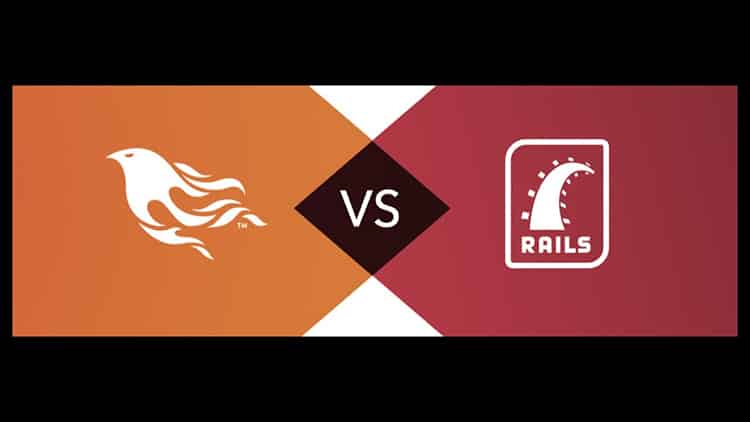Web application frameworks, or simply web frameworks, are the true approach to manufacturing web-empowered applications. From basic web journals to complex AJAX-rich applications, each page on the web was made by composing code. Numerous designers keen on taking in a web framework like Flask or Django don’t generally comprehend what a web framework is, the thing that their motivation is, or how they work. In this article, we will investigate the regularly neglected point of web framework basics. Before the finish of the article, you ought to have a strong comprehension of what a web framework is and why they exist in any case. This will make it far less demanding to take in another web framework and settle on an educated choice in regards to which framework to utilize or let you to choose the best framework to develop your web-empowered application.
Elixir Phoenix Framework
The language was made by José Valim, an outstanding engineer in the open-source world. Those who study elixir and phoenix framework will be posted in the section of hire freelancers online division. You may know him from the Ruby on Rails MVC framework or from a device and basic shape ruby diamonds him and his associates from the Plataformatec have been dealing with over the most recent couple of years.
Ruby on Rails framework
Figuring out how to construct a present day web application is overwhelming. Ruby on Rails makes it considerably simpler and more fun. It adds in all that you have to assemble incredible applications, and you can learn it with the support of our expansive, amicable group. Ruby on Rails is open source programming, so in addition to the fact that it is allowed to utilize, you can likewise help improve it. More than 4,500 individuals as of now have contributed code to Rails. It’s less demanding than you might suspect to wind up noticeably one of them. As a standout amongst the most effective approaches to rapidly create web applications, Ruby on Rails has a high pertinence and request in today’s commercial center.
Best framework between Elixir Phoenix Framework and Ruby on Rails
The examination amongst Rails and Phoenix as an approach to help the individuals who know about Rails see a portion of the shared characteristics between the two frameworks. Both Rails and Phoenix are web frameworks that share a shared objective that is to help you to be gainful at the earliest opportunity. Truth is told, Elixir’s maker José Valim was a freelance web developer from the Rails center group, and Chris as well originates from a Rails foundation. So you shouldn’t think that it’s unusual to see a portion of the best parts of Rails look like what is inside Phoenix. Rails and Phoenix are web frameworks that share a shared objective.
Getting Your App Up and Running
After you’ve introduced the base-level conditions to have the capacity to make a Rails or Phoenix application, (for example, Ruby, Elixir, and both of the frameworks), you have to make the application itself. We’ll be working out the beginnings of a Twitter clone in both Rails and Phoenix.
Up and running with Rails
The initial phase in making a Rails application is to run the operation to produce it. This will set up the default organizer framework alongside the greater part of the records expected to go ahead and hire freelancers online. Once we’ve done that, we can book into the list and direct package to introduce the majority of the conditions found inside the Gemfile.
Up and running with Phoenix
This will take after a fundamentally the same as the procedure to the one in Rails. To begin with Phoenix, you’ll run the blend phoenix.new order. This will make the envelope framework and documents required for the application. You’ll see that the blended charge is similar to package in Ruby land, additionally a tiny bit like the rake.
Routing
Routing is truly the bleeding edge of any web application, where an HTTP asks forgets sent to a Controller that is set up to deal with it.
Routing in Rails
Routing in Rails occurs through a simple to utilize DSL. Since this is quite recently the start of an application, we’ve basically characterized two courses. We have one for our client’s asset and settled inside, we have the tweets asset. This enables us to develop complex URLs which resemble this:/clients/:user_id/tweets keeping in mind the end goal to see the tweets that have a place with a particular client.
Routing in Phoenix
Directing in Phoenix may at first look appear to be like how it is done in Rails, yet in all actuality, there is more here than meets the eye. It is somewhat more, yes, however, we’ll take a gander at what the diverse segments are doing.
Plugs and pipelines
A bond assumes a noteworthy part to the Phoenix framework. Despite the fact that they vary, regardless I think they most nearly take after middleware, for example, what is found in Rack-based Ruby frameworks. It is particular that enables distinctive web servers to talk a typical dialect with respect to the demand/reaction of an HTTP ask. Where it varies is that middleware tends to view things as demand and reaction, where plug sees things perhaps somewhat more comprehensively as an association.
Method signature pattern matching
Another fascinating thing about directing in Phoenix is that it is really a progression of macros which create techniques that have a similar name however with various marks. The remedy is a dialect which has design coordinating. For a case of how example coordinating functions, how about we take a gander at the basic case beneath. There are two techniques developed by freelance web developer with a similar name, however, has an alternate strategy signature. To be specific, one expects a contention and the other doesn’t. This can likewise convey the name polymorphism.
Conclusion
We think that you’ve begin to see that, while comparable, the thoughts and examples found in each of the frameworks do contrast, all while satisfying the familiar objective of accepting an HTTP ask for and constructing the appropriate response. The thoughts and examples found in Rails and Phoenix will be contrast but they will attain a well-known purpose.
- Top 6 SEO Tools to Boost Your Business - January 18, 2024
- Top PHP interview questions and answers 2020 - July 7, 2020
- How to create a Whatsapp account using the Australian number? - June 28, 2020


